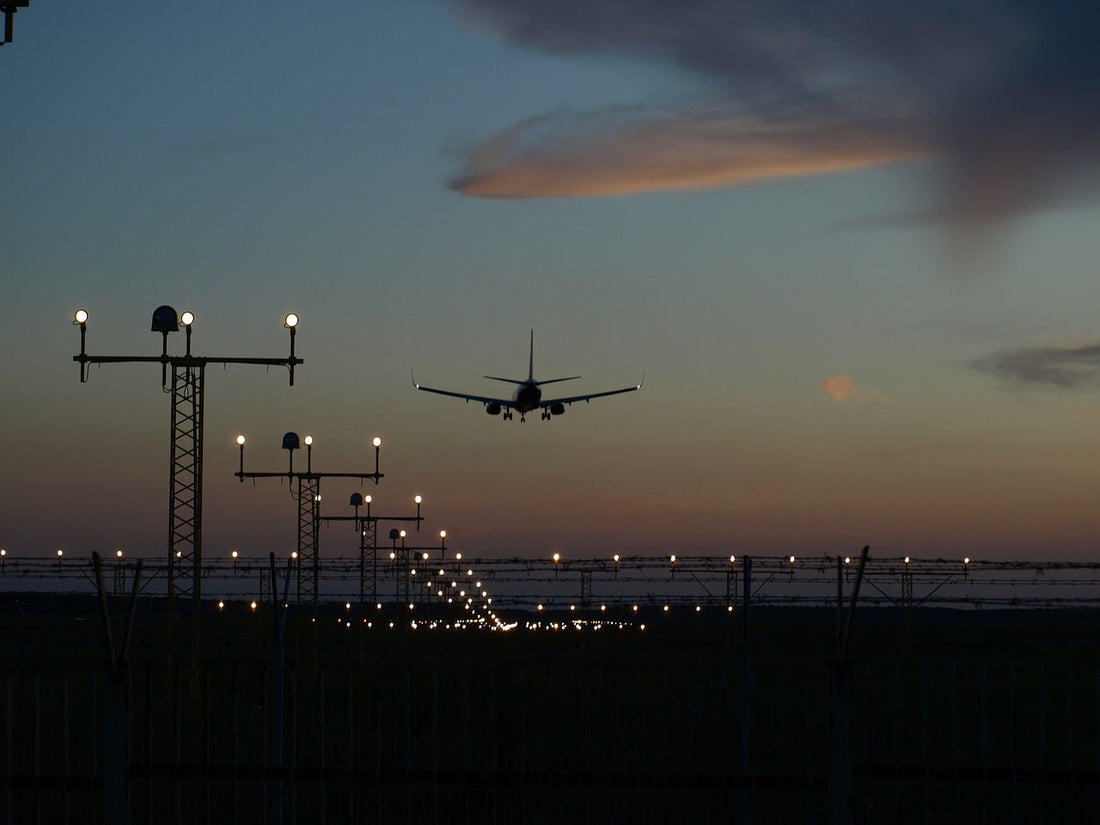
When Can You Descend Below Decision Altitude (Height)/Minimum Descent Altitude? FAR 91.175c
On the day of your instrument checkride, you want to perform with confidence in every area you’re assessed, both on the oral portion, as well as in your flight. As you work your way down the ACS and think through your holds and brief your approaches, at some point the examiner is guaranteed to ask you: “When you are allowed to continue an instrument approach procedure below the applicable Minimum Descent Altitude (MDA) or Decision Altitude (DA)?” or in simple terms, “When can you descend below decision altitude.”
Breaking Down 91.175(c)
To answer this, and the subsequent follow up questions already prepared in the examiner’s mind, we need to reference 14 CFR 91.175. This regulation, titled “Takeoff and Landing Under IFR”, contains several paragraphs, of which paragraph (c) is the most pertinent to the examiner’s question in our example. Let’s go ahead and break it down into smaller chunks and discuss what it’s telling us as pilots.
“(c) Operation below DA/DH or MDA. Except as provided in § 91.176 of this chapter, where a DA/DH or MDA is applicable, no pilot may operate an aircraft, except a military aircraft of the United States, below the authorized MDA or continue an approach below the authorized DA/DH unless—”
Let’s start by defining what exactly a DA/DH or MDA is, the Instrument Procedures Handbook (IPH) defines DA/DH in it’s glossary with the following definition:
“Decision Altitude (DA). A specified altitude in the precision approach at which a missed approach must be initiated if the required visual reference to continue the approach has not been established. The term “Decision Altitude (DA)” is referenced to mean sea level and the term “Decision Height (DH)” is referenced to the threshold elevation.”
The glossary’s definition continues, convening that DH is being phased out in favor of DA to better meld with international standards.
The IPH also contains the following definition for MDA in it’s glossary:
“Minimum Descent Altitude (MDA). The lowest altitude, expressed in feet above mean sea level, to which descent is authorized on final approach or during circle-to-land maneuvering in execution of a standard instrument approach procedure where no electronic glide slope is provided.”
With these terms established, let’s continue reading further in 91.175(c).
“(1) The aircraft is continuously in a position from which a descent to a landing on the intended runway can be made at a normal rate of descent using normal maneuvers, and for operations conducted under part 121 or part 135 unless that descent rate will allow touchdown to occur within the touchdown zone of the runway of intended landing;”
For an idea of what the FAA considers a “normal rate of descent”, we can reference the Airplane Flying Handbook, page 9-6:
“Descent rate. A descent rate (generally 500-1000 fpm for light general aviation aircraft) makes for a safe approach. Minimal adjustments to the descent rate as the airplane approaches the runway provide an additional indication of a stabilized and safe approach. If using a descent rate in excess of 500 fpm due to approach considerations, the pilot should reduce the descent rate prior to 300 ft AGL.”
The term “normal maneuvers” is also further explained in AC120-29A, “Criteria for Approval of Category I and Category II Weather Minima for Approach”:
“Normal maneuvers typically do not involve use of bank angles greater than 30 degrees, pitch attitudes in excess of 25 degrees nose up or 10 degrees nose down, or sink rates in excess of 1100 ft. per minute below 500 ft. HAT while maneuvering to land within the touchdown zone, during go-around, or during a rejected landing. During a missed approach, pitch attitudes in excess of +30 degrees or bank angles greater than 30 degrees would typically be considered excessive.”
If you happen to be operating under Part 121 or 135, you must touchdown within the first 3,000 feet of the runway, which is the definition of touchdown zone according to the Pilot/Controller Glossary.
“(2) The flight visibility is not less than the visibility prescribed in the standard instrument approach being used; . . .”
For the definition of “flight visibility” we again turn to the Pilot/Controller Glossary, which defines it as “[t]he average forward horizontal distance, from the cockpit of an aircraft in flight, at which prominent unlighted objects may be seen and identified by day and prominent lighted objects may be seen and identified by night.”
(3) Except for a Category II or Category III approach where any necessary visual reference requirements are specified by the Administrator, at least one of the following visual references for the intended runway is distinctly visible and identifiable to the pilot:
Let’s assume you are NOT flying a a category II or III approach for this discussion. You must see the following references without any doubt as to what you are looking at (definitions/descriptions derived from the Pilot/Controller Glossary):
(i) The approach light system, except that the pilot may not descend below 100 feet above the touchdown zone elevation using the approach lights as a reference unless the red terminating bars or the red side row bars are also distinctly visible and identifiable.
If you happen to spot the ALS, that’s great and let’s you come down a bit further, but you’ll need to also distinctly identify the red terminating bars or red side row bars of an ALSF-1 or ALSF-2 approach lighting system or one of the remaining visual references listed below:
(ii) The threshold.
The term threshold is defined in the Pilot/Controller Glossary as “[t]he beginning of that portion of the runway usable for landing.”
(iii) The threshold markings.
The markings found on the threshold defined above.
(iv) The threshold lights.
These are “fixed green lights arranged symmetrically left and right of the runway centerline, identifying the runway threshold.” (Pilot/Controller Glossary)
(v) The runway end identifier lights.
These are “[t]wo synchronized flashing lights, one on each side of the runway threshold, which provide rapid and positive identification of the approach end of a particular runway.” (Pilot/Controller Glossary)
(vi) The visual glideslope indicator.
This could be either a VASI or PAPI system.
(vii) The touchdown zone or touchdown zone markings.
The first 3,000 feet of available runway, or the markings on that surface.
(viii) The touchdown zone lights.
Two rows of transverse light bars located symmetrically about the runway centerline normally at 100 foot intervals. The basic system extends 3,000 feet along the runway.
(ix) The runway or runway markings.
(x) The runway lights.
Runway Lights/Runway Edge Lights− Lights having a prescribed angle of emission used to define the lateral limits of a runway. Runway lights are uniformly spaced at intervals of approximately 200 feet, and the intensity may be controlled or preset.
If at any point you lose these required references completely, you deem that the flight visibility has deteriorated below the published minimum for the approach, or you are unable to comply with any other requirement under 14 CFR 91.175 you must immediately execute a missed approach.
Conclusion & Looking Beyond the Checkride
Just as you learn anything, especially in aviation, these requirements will enter your mind through rote memorization. It is important to always pursue what lies beyond basic memorization and challenge yourself to ponder what the next level of understanding is and ponder scenarios you could encounter as an IFR pilot, including scenarios like when can you descend below decision altitude and the conditions that allow for it. Often, I find that recently certificated instrument pilots are hesitant to actually utilize their rating to fly in the clouds. Have reasonable personal minimums, continue to learn regulations and techniques in increasingly meaningful ways, and stay proficient with IFR flying beyond your checkride or it will become more and more difficult to truly gain confidence in IMC.
by Jacob Tacke, CFII
Northstar Aviation References brings you the Pre-Tabbed ASA FAR/AIM, DIY tabs for your FAR/AIM and other pilot resources so that you can more easily study the regulations that form the foundation of your flying career or hobby. Have any questions? Check out our FAQs page or contact us. Check out other blog posts here.
